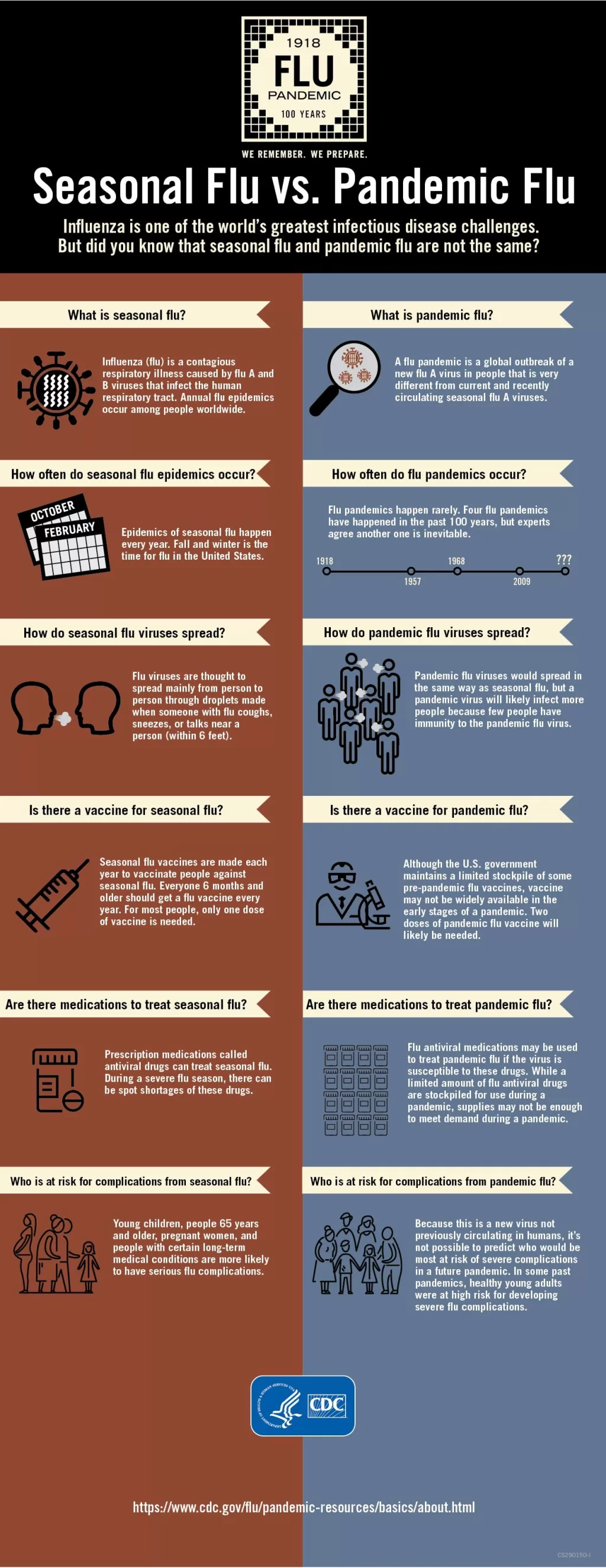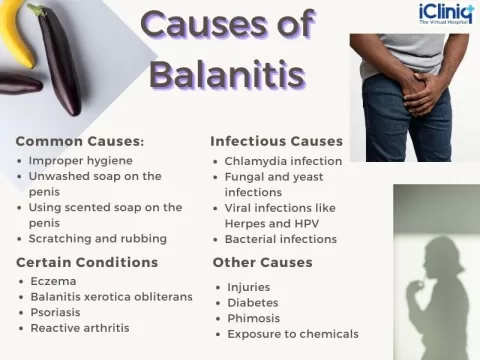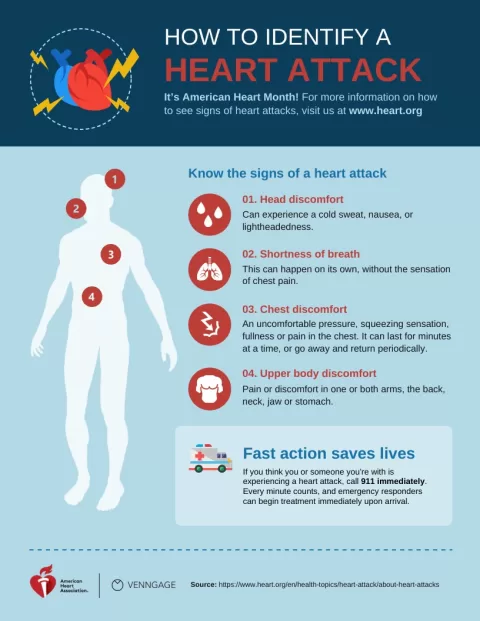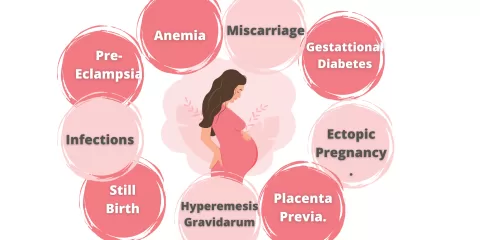Seasonal influenza, commonly known as the flu, is an acute respiratory infection caused by influenza viruses that affects millions each year. With approximately one billion cases globally, the impact of seasonal influenza goes beyond just discomfort, leading to millions of severe illnesses and hundreds of thousands of deaths annually. Understanding influenza symptoms, such as sudden fever, cough, and fatigue, is critical for early detection and treatment. The seasonal flu vaccine remains the most effective way to prevent infection and is especially crucial for high-risk populations. By gaining knowledge about influenza prevention and treatment, individuals can better protect themselves and their communities from this pervasive virus.
The seasonal flu, or annual influenza outbreak, poses a significant public health challenge worldwide, affecting various demographics annually. This contagious respiratory illness can result in a spectrum of symptoms, ranging from mild to severe, underscoring the importance of understanding this viral infection. As flu season approaches, discussions around effective influenza prevention strategies, including vaccination and hygiene practices, become vital in curbing transmission. Those at higher risk, such as young children and the elderly, should prioritize receiving the seasonal flu vaccine to mitigate potential complications. Through awareness and strategic measures, communities can combat the spread of seasonal influenza and its associated consequences.
Understanding Seasonal Influenza Symptoms
Seasonal influenza presents itself with a range of symptoms that typically onset 1–4 days after infection. Commonly reported signs include a sudden fever, dry cough, intense headaches, muscle and joint pain, and severe fatigue. Individuals may also experience sore throats and runny noses. For many, these symptoms manifest abruptly, leading to a feeling of being quite unwell overall. While the average person recovers from these symptoms in about a week, the persistence of a severe dry cough can linger for two weeks or more, creating additional discomfort.
Recognizing the full spectrum of influenza symptoms is critical, especially as they can exacerbate underlying health issues in certain individuals. For example, those with chronic respiratory conditions may find that influenza significantly worsens their symptoms, necessitating medical attention. The flu can lead to severe complications like pneumonia, especially in high-risk populations, thus making awareness of symptoms crucial for early treatment and management.
Effective Prevention of Influenza
Prevention is paramount in reducing the prevalence of seasonal influenza. The most effective way to avert infection is through vaccination. With vaccines being updated annually to align with circulating strains, the flu vaccine aims to bolster immunity among various populations, particularly for those at high risk such as the elderly, pregnant women, and individuals with chronic illnesses. In addition to vaccination, practicing good hygiene such as regular handwashing, avoiding close contact with sick individuals, and proper respiratory etiquette are essential measures to minimize the transmission of the virus.
Preventive strategies must be widely promoted, as influenza can spread easily in communal environments like schools and workplaces. Covering mouths and noses with tissues during coughs and sneezes, along with proper disposal of tissues, can significantly reduce the virus’s transmission. It is also important for individuals experiencing flu symptoms to stay home, thereby protecting vulnerable populations and reducing the burden on healthcare systems during peak influenza seasons.
Vaccination: Key to Influenza Prevention
The seasonal flu vaccine is a cornerstone of flu prevention strategies worldwide. Immunization is recommended annually to maintain adequate protection, as immunity from previous vaccinations can wane over time. Vaccination not only reduces the incidence of influenza infections but also helps to lessen the severity of the disease should infection occur. For high-risk individuals—including elderly patients, young children, and those with weakened immune systems—annual vaccination is crucial to minimize complications resulting from influenza.
It’s essential to keep in mind that while the effectiveness of vaccines may vary from season to season, they still play a fundamental role in public health. Influenza vaccination campaigns aimed at high-risk groups are instrumental in reducing the incidence of hospitalizations and influenza-related deaths. Public health messaging should reinforce the importance of obtaining the seasonal flu vaccine as part of routine healthcare practices to ensure community protection.
Exploring Influenza Treatment Options
Treatment for seasonal influenza primarily focuses on alleviating symptoms, as most people recover without needing extensive medical intervention. For those presenting with mild symptoms, it’s advised to rest, stay hydrated, and treat symptoms such as fever or cough with over-the-counter medications. However, individuals with serious symptoms or those belonging to at-risk groups—such as the elderly or those with chronic health issues—should seek prompt medical attention and may require antiviral medications.
Antiviral drugs can significantly improve outcomes for high-risk patients by reducing the duration of illness and the risk of complications. It is crucial that treatment begins as soon as symptoms appear, ideally within the first 48 hours. Recognizing when to seek treatment and understanding the available options can empower individuals to make informed decisions about their health during influenza season.
Influenza Epidemiology: Understanding the Impact
Epidemiological studies indicate that seasonal influenza affects a substantial portion of the global population every year, with estimates suggesting around a billion cases annually, leading to significant morbidity and mortality. Understanding the epidemiological patterns of influenza is essential for effective public health planning and response. Specific populations, such as pregnant women, older adults, and young children, are at heightened risk for severe complications, which underscores the importance of targeted vaccination efforts and adequate healthcare access.
Influenza viruses, particularly type A and type B, contribute to seasonal epidemics, and understanding their circulation patterns can inform vaccine formulations. Surveillance systems are critical in tracking ongoing flu activity and guiding public health policies. By recognizing trends in influenza epidemiology, health organizations can better prepare for potential outbreaks and ensure that preventive measures are effectively implemented to protect vulnerable populations.
Transmission Dynamics of Influenza
Understanding how seasonal influenza spreads can aid significantly in preventing its transmission. The flu virus primarily spreads through respiratory droplets expelled when an infected person coughs or sneezes, which can easily infect those nearby. Additionally, the virus can survive on surfaces, making hand hygiene a critical aspect of prevention. Educational efforts should emphasize preventative practices, such as frequent handwashing and the use of sanitizers, especially in crowded or communal settings.
In temperate climates, seasonal flu epidemics typically occur during winter months, whereas tropical regions may experience outbreaks year-round. This variability requires tailored public health responses based on local transmission patterns. Emphasizing the importance of vaccination and hygiene during anticipated high transmission periods can significantly mitigate the spread of seasonal influenza.
Diagnosing Influenza: Challenges and Strategies
Diagnosing influenza can often prove challenging due to the overlap of its symptoms with other respiratory illnesses. Accurate testing is essential for distinguishing influenza from other infections, particularly during low flu activity periods. Clinically, most cases can be identified based on symptomatology; however, laboratory confirmation through methods like RT-PCR is often necessary to confirm the diagnosis and guide treatment strategies.
Timely identification of influenza cases can enhance response efforts, particularly in public health settings. Healthcare providers should be aware of the resources available for laboratory testing and employ them when necessary, especially in cases involving high-risk patients or severe illness. Improving awareness of influenza surveillance helps to better inform communities about circulating strains and potential outbreaks.
Understanding Influenza Complications and Risks
Certain populations are more susceptible to influenza-related complications, which can result in severe health issues or even death. Young children, especially those under 5, pregnant women, older adults, and individuals with pre-existing conditions face increased risks. Understanding these risks is crucial for healthcare providers to recognize and manage effectively, ensuring that preventive measures such as timely vaccinations are prioritized within these groups.
In high-risk individuals, influenza can lead to serious conditions such as pneumonia or exacerbate chronic illnesses, necessitating vigilant monitoring and care. Awareness and education about the potential complications of influenza can empower caregivers and individuals at risk to prioritize their health, seek medical care promptly, and adhere to preventive measures like vaccination and proper hygiene.
WHO’s Global Strategy on Influenza Control
The World Health Organization (WHO) plays a vital role in controlling seasonal influenza on a global scale. Through initiatives such as the Global Influenza Programme and GISRS, the WHO offers guidelines on vaccine composition, monitors virus activity, and supports countries in building their response capacities. These efforts are aimed at enhancing the detection of influenza viruses, which in turn informs public health interventions and vaccination strategies.
By collaborating with international partners, the WHO ensures that timely updates on influenza surveillance data are disseminated globally, guiding national public health responses. Their commitment to researching new interventions and improving existing strategies is critical for advancing global health security and reducing the burden of seasonal influenza across diverse populations.
Frequently Asked Questions
What are the common influenza symptoms associated with seasonal influenza?
Common influenza symptoms associated with seasonal influenza include a sudden onset of fever, dry cough, sore throat, fatigue, body aches, and headache. These symptoms typically manifest 1-4 days after infection and usually last about a week.
How can I prevent getting seasonal influenza?
Preventing seasonal influenza primarily involves getting vaccinated annually. Additionally, practicing good hygiene such as frequent handwashing, covering your mouth when coughing or sneezing, and staying home when sick can help reduce the risk of infection.
What is the importance of the seasonal flu vaccine?
The seasonal flu vaccine is crucial as it helps protect individuals from influenza viruses that circulate each year. It reduces the risk of severe illness and complications, especially in high-risk groups such as pregnant women, young children, and older adults.
What treatment options are available for seasonal influenza?
Treatment for seasonal influenza generally focuses on symptom relief, including rest, hydration, and over-the-counter medications for fever and aches. Antiviral medications are recommended for those with severe symptoms or underlying health conditions.
What is the epidemiology of seasonal influenza and who is at higher risk?
Seasonal influenza affects all age groups, but individuals at higher risk for severe complications include young children, older adults, pregnant women, and people with chronic medical conditions or compromised immune systems.
How does seasonal influenza spread among individuals?
Seasonal influenza spreads through respiratory droplets when an infected person coughs or sneezes. It can also be transmitted by touching surfaces contaminated with the virus and then touching the mouth, nose, or eyes.
When is the best time to receive the seasonal flu vaccine?
The best time to receive the seasonal flu vaccine is before the flu season begins, typically in the fall, to ensure adequate immunity before exposure to circulating viruses.
What should I do if I suspect I have seasonal influenza?
If you suspect you have seasonal influenza, it’s recommended to rest, stay hydrated, and avoid contact with others. Seek medical attention if symptoms worsen or if you fall into a high-risk category.
Are there different types of influenza vaccines available for seasonal influenza?
Yes, there are several types of influenza vaccines available for seasonal influenza, including inactivated vaccines, recombinant vaccines, and live attenuated vaccines, which can be given via injection or nasal spray.
How effective are antiviral medications for treating seasonal influenza?
Antiviral medications are most effective when taken within 48 hours of symptom onset for treating seasonal influenza. They help shorten the duration of illness and reduce the risk of complications, particularly for high-risk individuals.
| Key Points | Details |
|---|---|
| Annual Cases of Seasonal Influenza | Around 1 billion cases, with 3–5 million severe illness cases. |
| Respiratory Deaths | Estimates of 290,000 to 650,000 deaths each year. |
| High-Risk Groups | Includes pregnant women, children under 5, older adults, and those with chronic conditions. |
| Symptoms | Fever, cough, sore throat, body aches, and fatigue, lasting about a week. |
| Transmission | Easily spread through coughing/sneezing and contaminated surfaces. |
| Prevention | Vaccination is the most effective method; handwashing and avoiding close contact also help. |
| Treatment | Focus on symptom relief; antiviral medications for high-risk groups. |
| WHO Monitoring | The WHO regularly updates influenza vaccine compositions and monitors virus activity. |
Summary
Seasonal influenza is a significant public health concern that leads to a billion cases and hundreds of thousands of deaths annually. Understanding its transmission, symptoms, and prevention measures is crucial to reducing its impact on vulnerable populations. Vaccination remains the best line of defense against seasonal influenza, and awareness can help minimize outbreaks and complications.
The content provided on this blog (e.g., symptom descriptions, health tips, or general advice) is for informational purposes only and is not a substitute for professional medical advice, diagnosis, or treatment. Always seek the guidance of your physician or other qualified healthcare provider with any questions you may have regarding a medical condition. Never disregard professional medical advice or delay seeking it because of something you have read on this website. If you believe you may have a medical emergency, call your doctor or emergency services immediately. Reliance on any information provided by this blog is solely at your own risk.








